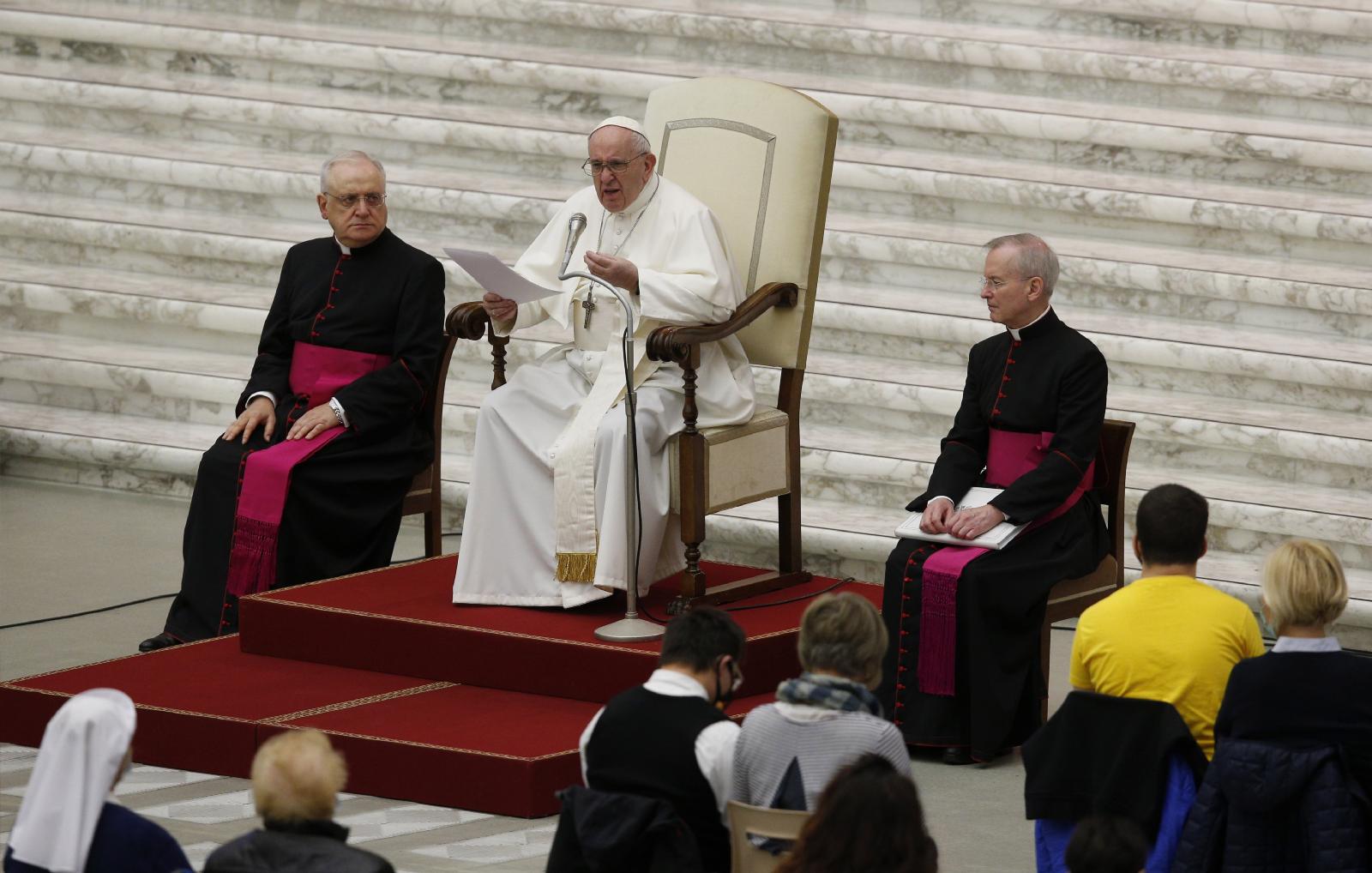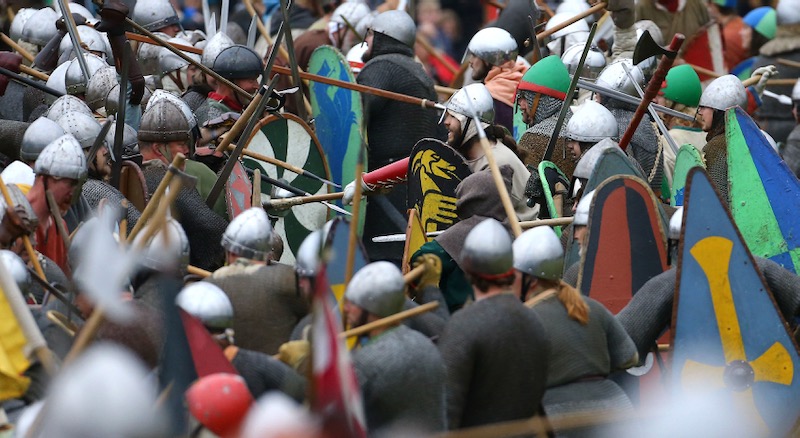For many people, medieval monasteries are associated with peace, tranquility and contemplation. But that’s only part of the story. Anniversaries falling on 14 October – the battle of Hastings in 1066 and the sacking of Rievaulx Abbey by a Scottish army in 1322 – show that some monasteries also have histories that are drenched in blood.
The Middle Ages were punctuated by warfare and violence so hideous that the battle scenes in Game of Thrones look positively tame in comparison. But even though bloodshed and brutality were endemic in the medieval world, that didn’t mean they were regarded as right. The brutishness of the ruling military elites was at the very least tempered by their genuinely held Christian beliefs, not least because the perpetrators were conscious that their savagery and immorality meant their souls stood a very real risk of burning in Hell for all eternity. The Church developed a sophisticated mechanism of penances whereby not so-chivalrous knights in blood-splattered armour could atone for their heinous sins.
William the Conqueror’s foundation of Battle Abbey (East Sussex) is an excellent example. As every school child still hopefully knows, the battle of Hastings was fought on 14 October 1066 between the armies of the native Anglo-Saxons, led by King Harold, and the invading Normans, under the leadership of Duke William of Normandy, aka William the Bastard – an epithet that referred to his doubtful parenthood rather than his well-deserved reputation for thuggish behaviour.
King Harold’s death, either due to an arrow in the eye or disembowelment by Norman knights (the sources disagree), epitomises the murderous violence of that epoch-making day. The events are graphically depicted in the Bayeux Tapestry. The images of dismembered warriors embroidered into its margins still have the power to shock.
In 1067, bishops in Normandy imposed stiff penances on William and his henchmen for the violence of the Conquest, which even by the standards of the Middle Ages, was barbaric. The victorious William sought to make spiritual compensation for the bloodshed by founding Battle Abbey. Sources dating to within living memory of the battle state that the monastery was founded on “the very spot” where William had won his great victory at the cost of so many thousands of lives.
His religious motives were explicit. The monastery’s own chronicle puts a speech into William’s mouth whereby he vowed: “On this very battlefield I shall found a monastery for the salvation of all, and especially for those who fall here…Let it be an atonement: a haven for all.”
William richly endowed his foundation at Battle. Eight times a day, the monks would have gathered in its church to sing the Divine Office. At each of these services, and at daily High Mass, the community would have prayed for the soul of their founder and also all those who had fought and died - Norman and Saxon alike - during the fighting on the site their abbey. As the monks’ own chronicle states, Battle Abbey was “to be a place of sanctuary for all, paying back the blood shed there by an unending chain of good works.”
Nobles and knights across the land followed the example of the Conqueror, founding or funding religious institutions of various sizes, putting to pious use wealth that was so often obtained via a clenched, chain-mailed fist. Don’t be too cynical. There’s no doubting the genuinely held religious beliefs and spiritual motives of many of these Anglo-Norman monastic patrons. They included Walter Espec, who founded Rievaulx Abbey (North Yorkshire) in 1132.
“Everywhere peace, everywhere serenity and a marvellous freedom from the tumult of the world”, wrote St Aelred, the monastery’s abbot between 1147 and 1167. But the abbey’s cloistered tranquility was shattered in the autumn of 1322 when it found itself on the front-line of a decades-long armed conflict between the kings of England and Scotland. Both sides considered monasteries fair game in this brutal warfare.
On the 14 October an invading Scottish army defeated the forces of King Edward II of England at the battle of Old Byland, or Scawton Moor, just a few miles from Rievaulx. Fourteenth-century sources describe how Edward II was enjoying the abbey’s hospitality and was settling down to a fine dinner when he heard news of the catastrophe. “Being ever chicken hearted and luckless in war”, Edward fled Rievaulx, and in his haste to escape the Scots abandoned the royal treasure and even his queen at the monastery.
The abbey was sacked. A contemporaneous annotation in a manuscript from the monastery’s library records that, “One the feast of St Callixtus [that’s 14 October to you and me] 1322, the Scots despoiled and damaged our monastery, taking away books, chalices and the sacred ornaments.” Nearby Byland Abbey was also pillaged. There’s no record of fatalities at either monastery, suggesting that the Scots acted with more honour and restraint than the English soldiers who, just weeks earlier, had not only desecrated the high altar of Melrose Abbey in the Scottish Borders, but also cruelly killed several of its aged and infirm monks.
Many other monasteries in the border zone have similar stories of violence and sacrilege. The monks didn’t always turn the other check and weren’t above wishing ill on the perpetrators. A note added to a manuscript from Newminster Abbey (Northumbria), for instance, records with satisfaction the slaying of several Scottish knights who’d pillaged the monastery a few days before.
Monasteries were far from being the only non-combatants to suffer at the hands of marauding medieval armies: the populations of villages, even entire towns, were put to the sword. But the killing, together with the attendant raping and pillaging, could have a profound impact on the psyche on its perpetrators. There are descriptions of medieval knights suffering from what we’d now recognise as post-traumatic stress disorder. Many a warrior put aside the sword to become a monk, abbeys, priories and hermitages providing psychological as well as spiritual healing. It was one of the many ways in which medieval Christianity, and especially the monasteries, made the often short lives of our medieval ancestors just that little bit less nasty and brutish.



 Loading ...
Loading ...
What do you think?
You can post as a subscriber user ...
User comments (1)